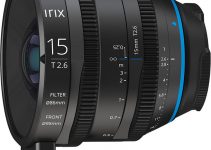Congratulations, you did it! You just went and got yourself a fancy new RED Komodo. Now what? Red Digital Cinema prides itself on putting image quality at the forefront of their cameras and since they were the first to bring an all digital workflow to the market way-back-when with the Red One, they created the workflow for how it is done.
For most of us Red has always been just a little out of reach, but with the release of the Komodo, Red cameras are finding their way into the hands of a lot of first-time users. If you’ve never worked with Red footage in post before, it can seem like a pretty daunting task but the results you’ll achieve doing things the right way will be completely worth your effort.
That’s why the good folks at Red Digital Cinema have put together this great tutorial to get you started!
We’ve talked about the RED Komodo a lot, so I won’t bore you with specs and numbers up front. Suffice to say, it’s an interesting little camera – when Sony, Canon, and Blackmagic where cramming in features to drive sales, Red bet big on image quality. You can read our coverage of the Komodo here.
Truthfully, I was never a fan of Red. I liked the images that I saw, but everything seemed like it was such a hassle. Whatever-other-camera I had been using at that point just seemed easier than Red so I never gave them a second thought. But, all of that changed the minute I set my eyes on some raw footage from the Komodo.
I’m not sure exactly what it is I like about Komodo footage, but I just really dig the way it looks. I’ve also had a bit of experience with Red footage so working with it in post is really second nature to me at this point, but for a lot of people that isn’t the case.
With so many new Komodo users, there are a few complaints about file structures, low-light issues, color profiles, and a host of other things so Red did the thing that any good company would do – put together a video to help you get started. For the sake of not being redundant, let’s briefly touch on the workflow here. The aforementioned video is only 11 minutes long, and although it’s a bit techie, it’s loaded with important information.
The recommended software for processing your footage from the Komodo is DaVinci Resolve so let’s see how to set it up to get the best results.
Step One: Enable Graphics Card Acceleration
In Preferences, select Decode Options and choose Decompression and Debayer.
This tells Resolve to use your high-end graphics card to decompress and process your raw Red footage, and depending on what you’ve got inside your system this could speed things up tremendously.
Step Two: System Settings
Click the System Settings gear wheel in the bottom righthand corner.
Enter These Settings:
- RAW Profile: RED
- Decode Quality: Full Res. Premium
- Bit Depth: 16
- takes full advantage of the raw image files.
- Decode Using: Project
- Color Science: IPP2
- Color Space: RedWideGamutRGB
- Gamma Curve: Log3G10
- Uncheck Apply Metadata Curve
- Check Chroma Noise Reduction
- Flashing Pixel Adjust: Medium
- Check ISO, Exposure Adjustment, Color Temp, Tint
- This will default these parameters to the in-camera settings.
- Save
You don’t want to have to go back and input these settings every time you start new projects, do you?
Go into Project Settings, select Presets, name and save these settings for your next project.
Step Three: Output Transform
An output transform is essentially a LUT that is used as the final step in your color grade to finalize the look of your footage for whatever final viewing space it is headed toward. Red recommends generating a IPP2 to REC 709 (or Rec2020, if that’s where it’s headed) from Red Cine-X or using DaVinci Resolve’s Color Management Workflow.
Option 1: Red Cine-X Lut
In Red Cine-X, Select File / IPP2 Lut Creator
Output Transform Settings:
- Color Space: REC 709
- Gamma Curve: BT1886
- Output Tone Map: Medium
- Highlight Roll-Off: Soft
Save the LUT, and back in DaVinci Resolve, load the LUT in the Color Management tab in Project Settings and change the 3D Lookup Table Interpolation to Tetrahedral.
Apply this LUT at the final step of your color grade.
Option 2: Color Management Workflow
In Resolve, under Project Settings / Color Management Select:
- Color science: Davinci YRGB Color Managed
- Input Color Space: Bypass
- Timeline Color Science: REDWideGamutRGB/Log3G10
- Output Gamma: Rec. 709 Gamma 2.4
- Timeline to Output Gamma Mapping: RED IPP2 Gamut Mapping
- Output Tone Mapping: Medium
- Highlight Roll Off: Soft
- Save
Step Four: Delivery
Red recommends selecting Force Full Res Debayer on the deliveries page to ensure you’re outputting at the highest possible quality.
That might seem like a lot, but Red gives you the option to adjust everything. They make their cameras with image quality and adjustability at top of mind, where other manufacturers that we’ve grown accustomed to have severely limited our ability to affect how that data we’re collecting is processed.
So if you’re having problems working with the raw footage you’ve been shooting with your brand new Komodo 6K camera, it’s just because Red is one of those camera makers that REALLY makes you read the manual, and there is a whole lot of manual to read. Give these settings a try and see if they help smooth things out for you.
[source: Red Digital Cinema]
B&H Order Link:
RED DIGITAL CINEMA KOMODO 6K Digital Cinema Camera (Canon RF)
Disclaimer: As an Amazon Associate partner and participant in B&H and Adorama Affiliate programmes, we earn a small comission from each purchase made through the affiliate links listed above at no additional cost to you.




